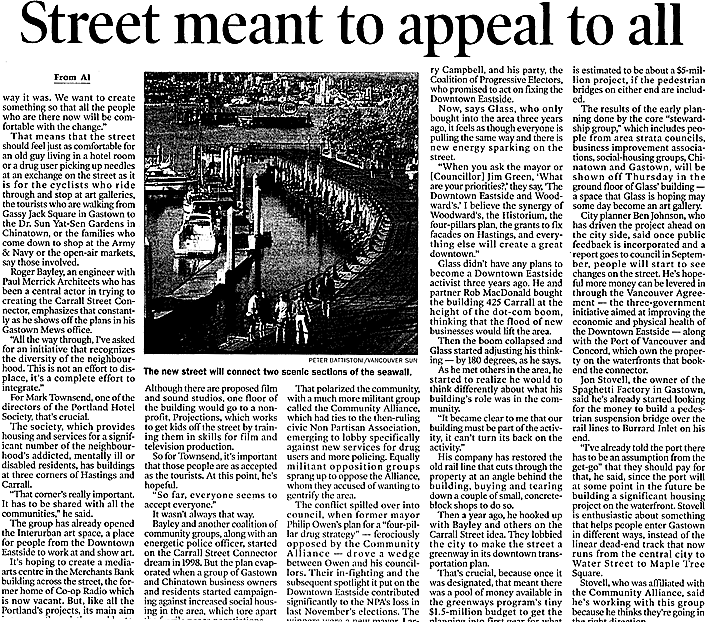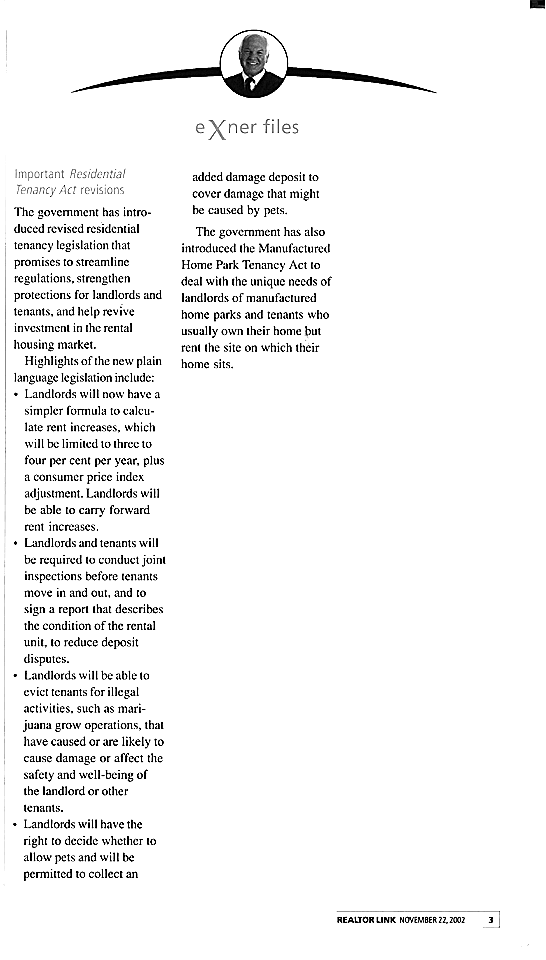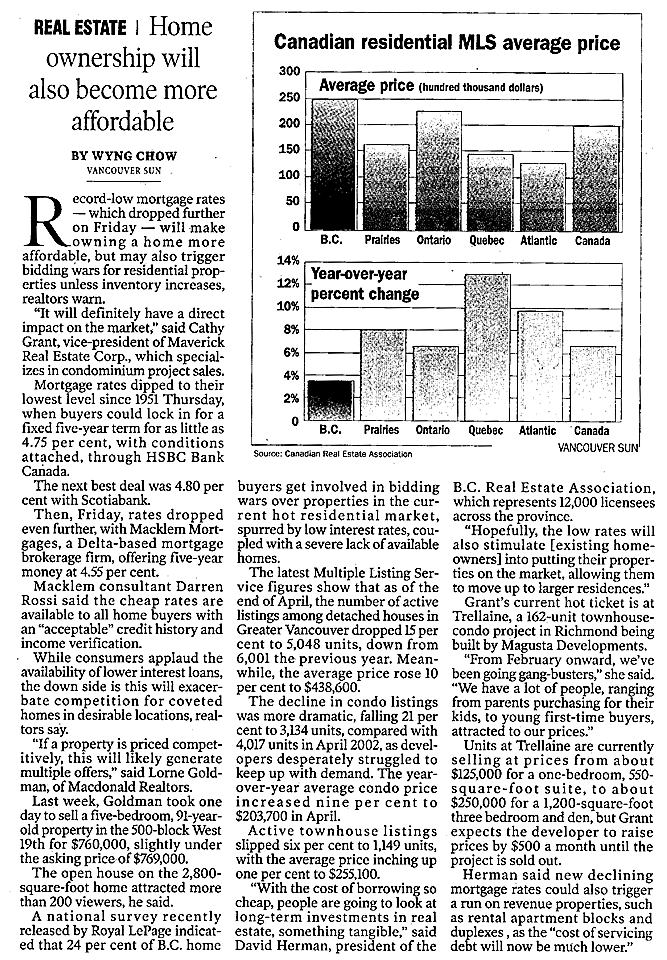The cheers are going up again as the housing market booms, but out on the streets it’s hell for young buyers
Jason Proctor
Other

VANCOUVER Price: $299,000.00 Bedroom(s): 4 Bathroom(s): 2 Floor space: 1,700 square feet (158 square metres) Lot size: 4,050 square feet Age: 53 years Features: Solid two-level bungalow. New paint and carpet. Two-bedroom suite downstairs. Downtown view .

CALGARY Price: $299,000 Bedroom(s): 3 Bathroom(s): Full 2, half 1 Floor space: 2,157 square feet (200 square metres) Lot size: 7.5 x 30.5 metres, pie-shaped Age: 6 years Features: Spectacular ridge lot with view of creeks, lake, city lights, Bow River and ravine. Lots of huge windows, hardwood, basement.

WHITEHORSE Price: $269,500 Bedroom(s): 5 Bathroom(s): 1 3/4 Floor space: 2,100 square feet (195 square metres) Lot size: 3.5 acres Age: 23 years Features: Huge living room with bay window for view of 3.5 acres of award-winning gardens. Finished garage, separate workshop, greenhouse and storage sheds

WINNIPEG Price: $299,900 Bedroom(s): 4 Bathroom(s): Full 3, half 1 Floor space: 2,632 square feet (245 square metres) Age: 9 years Features: Private treed lot on quiet cul-de-sac. Over 2,600 square feet. Great layout, soaring ceilings, lots of windows. Developed basement. Built on piles.

MONTREAL Price: $299,000 Bedroom(s): 3 Bathroom(s): Full 1, half 1 Lot size: 6,219 square feet (578 square metres) Age: 48 years Features: Central air conditioning, parking space(s), paved driveway, water from municipality; six-feet-and-over basement, completely finished; municipal sewage.

St. John’s, Nfld. Price: $299,000 Bedroom(s): 3 Bathroom(s): 3 Floor space: 3,298 square feet (306 square metres) Lot size: 60 x 200 feet Age: 49 years Features: Two-storey in park-like setting with mature trees, flowers and large sundeck. Hardwood floors in living and dining rooms.

CREDIT: Gerry Kahrmann, The Province
It’s a typical afternoon for Vancouver house-shoppers.
The sign went up on the lawn eight hours ago, the realtor’s phone has been ringing off the hook all morning and — unbeknownst to the lineup of couples who all thought they had an early jump on an exclusive look at a hot property — an impromptu open-house of this $319,000 fixer-upper is about to begin. At least it has hardwood floors.
A cynic’s-eye view? Sorry to detract from the Real Estate Board’s good-news spin on the Lower Mainland’s booming market, but it’s hell out there for young buyers. Sellers with dollar signs in their eyes are asking the moon for dilapidated dumps and agents are treating customers more like bidders at an auction than people signing their lives to a serious offer.
We didn’t get the aforementioned home. The realtor refused to take offers before noon on a fixed date, inviting a bidding war. The winner bid above list, with no conditions, and for those of you unfamiliar with the process, that means no property inspection, no subject-to on financing — in short, no safety. How to compete?
Figures released this week show the benchmark price of a single family house in Vancouver is now $418,060, up 9.6 per cent from last year. The board claims that’s great news for buyers and sellers because interest rates are at record lows. But not everybody sees it that way.
Walking around one particularly horrific property, we met a couple who had sold their condo for an excellent price only to realize that they needed to buy back into the market which they had just helped to inflate. Sellers moving to Newfoundland might bank some of their profits, but stay in town and you’ll soon find we’re all drinking from the same overpriced well.
And what of the first-time buyer? It’s easy to watch the bottom line expand — especially with interest rates sitting as low as 4.75 per cent. After all, what’s $50,000 spread over 25 years? Sadly, $300,000 in Vancouver will buy you the kind of house that any self-respecting ghost would refuse to haunt. My impression is that buyers are calculating the absolute limit their earnings will allow them to pay each month, subtracting $100 for groceries and then putting in an offer.
Does anyone remember the ’80s, when interest rates went into the high teens? Ask the victims of that turnaround, many of whom simply walked away from mortgages and homes unable to make payments. Then ask yourself if you could survive a shift of even a few points in today’s rates.
We’ve been looking for only a few months, but a friend gave us a piece of advice early on which — sadly — I’m beginning to take to heart. Always remember that everyone is working for the seller. The commission is split between realtors, so — no matter how nice your agent is — it’s the seller who writes the cheque.
But my biggest beef is agents who make you feel like your $300,000 — let’s be honest, our $30,000 and the bank’s $270,000 — is a pittance. Maybe it is in a market where buyers bid blind, but let’s think for a moment about how large these figures actually are. That benchmark price is just shy of half a million. How much do you make a year?
I’m not trying to throw cold water on hot real estate — just advising a little caution. There are deals out there, and I hope we find one. But it’s about time that somebody spoke up for the buyer.
Pittance or not, we are, after all, the ones with the money.
WHAT $300,000 WILL BUY YOU IN VARIOUS CANADIAN CITIES
Source: Multiple Listings Service website at www.mls.ca
© Copyright 2003 The Province












